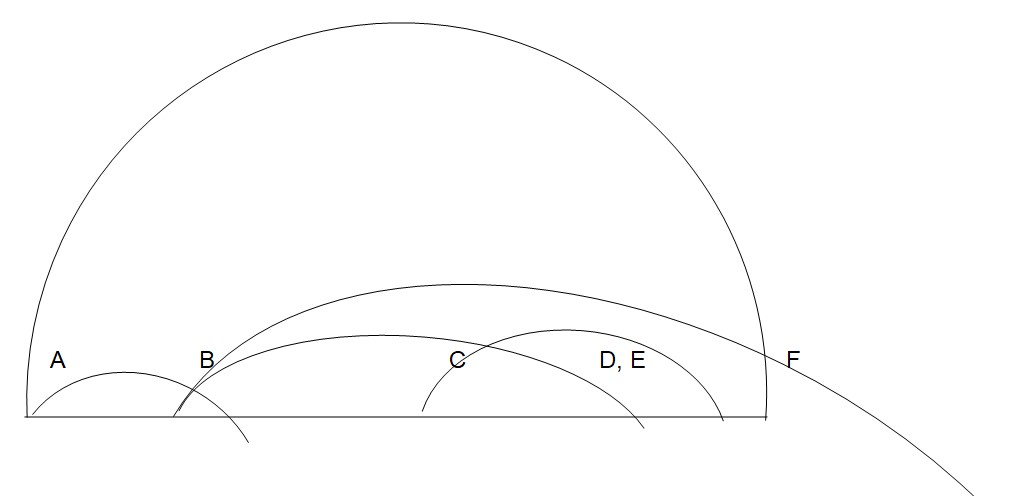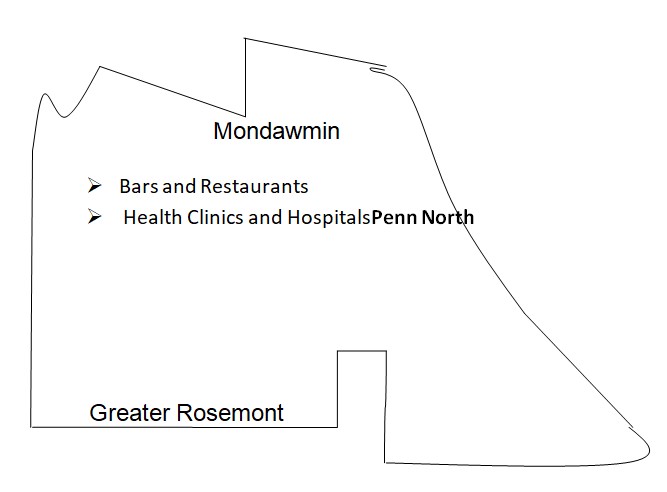Introduction: Description and Characteristics of the Mondawmin Community
In 2008, the Baltimore City Planning Department came up with a list of 55 recognizable neighborhoods classified as Community Statistical Areas (CSA) within the city (Baltimore City Health Department, 2008). The main aim of creating the areas was to make resource allocation and planning easier. Further, the neighborhoods would ensure the prioritization of plans and programs in response to unique issues and demands that characterize each area. The application of the neighborhoods is common in major cities for purposes of health planning. In Baltimore, the health department provides a community health profile for each area, highlighting the health challenges and statuses of the population (Baltimore City Health Department, 2011). The community health profile consists of demographic information, data on mortality and causes of death, and maternal and child health outcomes. One of the Community Statistical Areas is the Mondawmin. The neighborhood was one of the 55 CSAs that was formed in 2008.
Mondawmin community is located neighbors Walbrook to the West, Dorchester and Sothern Park Heights to the North, Penn North to the East, and Greater Rosemont and Sandtown to the South. In 2000, the Mondawmin Community had an estimated total population of 9770, as compared to a population of 9339, which was recorded in 2010 (Baltimore City Health Department, 2011). With a total population of 646,802 in Baltimore, the Mondawmin population represents only 1.5% of the city’s population. In terms of age distribution, 21.2% of the population is below 17 years, while the age group of 18-24 years makes up 15.5%. 25-44-year-olds represent 22% of the population. The age groups of 45-64 years and 65 years and above represent 26.0% and 15.3% of the population, respectively (Baltimore City Health Department, 2011). The female population is more significant in the community representing 56.6% as compared to men who represent 43.4%.
The population of Mondawmin is composed of people of different ethnicities. In the neighborhood, the black population is the most prominent as compared to other racial/ethnic groups. For instance, the black population constitutes 96.7% of the whole population. This figure is above the city’s average, where the blacks constitute 63.6% of the population. The white population constitutes 1.2%, while Asians and Latinos make up 0.2% and 0.9% of the population, respectively (Spencer, Petteway, Bacetti, & Barbot, 2015). Other racial groups in the population that do not accurately identify with the groups mentioned above, such as American-Indians or Alaska Native, Native Hawaiian, and other groups, make up the remaining close to 2% of the population.
Education is a major indicator and determinant of health status in a community (Chen & Florax, 2010). For instance, approximately 61.6% of the adult population has a high school degree or less. However, only 14.3% of the people have a bachelor’s degree or more, as compared to the city’s average of 25.0%. In terms of income and employment, the community performs well as compared to other neighborhoods (Baltimore City Health Department, 2011). For instance, the unemployment rate for those above 16 years stands at 10.2% as compared to 11.1% for the wider city (Spencer et al., 2015). However, while the income performance is not critical, it is below the city’s average.
The median household income for Mondawmin is $34,438 as compared to $37,395 for the town. Other key indicators of the status of the population in the neighborhood include domestic violence and crime rate. For instance, the rate of domestic violence is very high as compared to the statistics obtained in the city. In Mondawmin, the domestic violence rate is 53%, as compared to 41% of the whole population (Spencer et al., 2015). Further, the Juvenile arrest rate is among the highest in the city. In this case, juvenile arrests for 10-17-year-olds are 234.8 per 1000, as compared to 145.1 per 1000 in Baltimore city.
Some of the key organizations in the neighborhood include Coppin State University, Frederick Douglass High School, Robert W. Coleman Elementary, Mondawmin Mall, and Bon Secours Liberty Village. The Juvenile population is at a high risk of criminal behavior, as indicated by the high number of arrests made in the neighborhood as compared to others in the city. Other important threats to the community include tobacco and alcohol-related complications due to the high number of people who consume the products.
History of Mondawmin Community Statistical Area
The city of Baltimore is one of the oldest cities in the United States. Formed in 1729, the city began with a mixed-use character and has grown tremendously over the years to its current state (Spencer et al., 2015). The city is famous for being the first in the country to enact a distinction residential ordinance that prohibited Blacks from moving to White-occupied regions and vice versa. Although the segregation policy was not zoning, it had a profound influence on the social context of the city. Indeed, the effects of the city’s segregation policy influenced the locations and settlement of different racial groups that are evident in the modern city of today. In the current state, the neighborhood’s population is predominantly black and is a direct consequence of the previous segregation policies that existed in the past. In 1923, the city adopted its first zoning code that emphasized the separation of uses in terms of commercial, residential, and industrial uses.
Mondawmin was classified as a mixed-use zone. The classification means that the area allows residential, commercial, and small-scale industrial activities to go on (Spencer et al., 2015). Before the establishment of Mondawmin, as it is known today, the area was agriculturally productive. As the city grew and engulfed the area, changes occurred. With time, the agricultural communities that were predominantly black became part of society’s growing population. The close-knit community that existed in the area guided the policies that led to the establishment of Mondawmin as a CSA area. The zoning of a place can have an influence on the health of a population. For instance, the classification of the city as a mixed-use zone has an influence on the health outcomes of the community (Chen & Florax, 2010). For instance, due to the small-scale industrial and commercial activities in the area, there are considerable cases of lead poisoning. Further, lifestyle problems because of tobacco smoking and alcohol taking are also big in the area.
Life Arc: Robert W. Coleman
Robert W. Coleman was born in 1876 to Alexander Coleman and Mary Jones. Robert’s father was a Sergeant in the US’s army. Robert relocated to Baltimore, where he married Mary Mason on August 5, 1903. They had six daughters together. In 1911, Robert lost his sight and went ahead to become an advocate for the rights of the physically challenged in the Baltimore community. In 1913, Robert was among the key people who formed the Association for the Handicapped, whose role was to champion the welfare of the handicapped population (Spencer et al., 2015). He began sight-saving classes in schools in addition to providing care for physically challenged children.
His efforts ensured that handicapped children could attend school just like other children who did not have such physical challenges. In the same year, Robert published the First Colored Professional, Clerical, Skilled, and Business Directory of Baltimore City. The direction was the first of its kind since it targeted the African-American community. Robert C. Coleman died on January 25, 1946, aged 70. The legacy of Robert W. Coleman lives on through the Robert W. Coleman Elementary school, which is at the heart of the Mondawmin CSA. The following diagram represents the life arc of Robert Coleman:

Map of Mondawmin Community

Top Five Issues Facing Mondawmin Community
The Mondawmin community many issues that have affected its health profile. However, among the issues, juvenile crime, poverty, domestic violence, Heart Diseases, and Cancer are the top five issues facing the neighborhood. Firstly, Juvenile crime is very high in the neighborhood and is indeed among the highest in the whole city. For instance, according to the 2009 records on the number of Juvenile arrests was 234.8 per 1000, which was higher than the city’s average of 145.1 per 1000. The high figure is a cause for worry since young people often represent bigger underlying social issues, which may have serious repercussions on the security of the neighborhood and the whole city (Sallis, Owen, & Fisher, 2008). High Juvenile arrests may be an indicator or dysfunctional family structures, high rate of poverty, which pushes young people to engage in crime and other factors that have implications for the current and future status of the society.
The second prominent issue facing the neighborhood is domestic violence. According to the Neighborhood Report of 2011, there were 52.8 per 100 resident cases of domestic violence (Spencer et al., 2015). This figure was higher than the city’s average of 40.6 per 1000. The high rate of domestic violence is an issue requiring immediate solutions to ensure better outcomes for families. Families, where domestic violence is perpetrated, have a higher risk of criminal behavior among the young ones (Wilson, Hutson, & Mujahid, 2008). Further, the likelihood of children later committing domestic violence against their families in the future is highly heightened.
The third issue that the community is facing is poverty. Poverty is an important determiner of health outcomes and future success for children in a family. According to the Neighborhood Report of 2011, 12.2% of the population leaves below the poverty line. In addition, 36.5% of the neighborhood’s population has a household income of less than $25000 compared to 33.3% of the city in this income range (Spencer et al., 2015). There is a need to put in place necessary measures to ensure more income at household levels to reduce the poverty rate in the neighborhood. The other important issue is heart disease, which is the leading cause of death in the community. The number of deaths because of heart diseases and related complications represent 25% of all the deaths in the neighborhood. This rate is equal to the city’s rate of deaths from heart diseases. Lastly, Cancer represents the second highest cause of death in the population of the neighborhood. The disease accounts for 17% of all deaths in the neighborhood.
Reference List
Baltimore City Health Department. (2008). Greater Mondawmin health profile 2008. Baltimore, ML: Baltimore City Department and Johns Hopkins Bloomberg School.
Baltimore City Health Department. (2011). Greater Mondawmin health profile 2011. Baltimore, ML: Baltimore City Department and Johns Hopkins Bloomberg School.
Chen, S., & Florax, R. (2010). Zoning for health: the obesity epidemic and opportunities for local policy intervention. The Journal of nutrition, 140(6), 1181-1184.
Sallis, J., Owen, N., & Fisher, E. (2008). Ecological models of health behavior. Health behavior and health education: Theory, research, and practice, 4(1), 465-486.
Spencer, M., Petteway, R., Bacetti, L., & Barbot, O. (2015). Healthy Baltimore 2015. Baltimore, ML: Baltimore City Health Department.
Wilson, S., Hutson, M., & Mujahid, M. (2008). How planning and zoning contribute to inequitable development, neighborhood health, and environmental injustice. Environmental Justice, 1(4), 211-216.